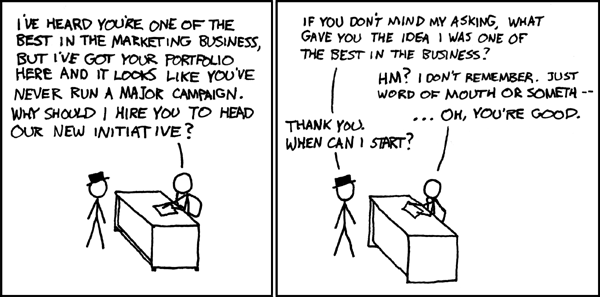Yesterday I got an e-mail from a PR person at The Rebel Media Group. One of her clients, John Wesley Harding, has a new album and it’s being promoted with a somewhat unorthodox tiered pricing scheme which ranges from CD plus download plus live disc for $15.98 to a package which includes the aforementioned plus a bunch more swag plus the artist coming to your house and putting on a show for you and your friends, all for $5,000. BoingBoing posted about it, and The Rebel Group’s Stef Shapira sent me a brief personal e-mail with that link and the observation that I might be interested talking about the marketing strategy at S21. John Wesley Harding isn’t a classical musician–he seems to be doing a sort of folky inde alt rock thing that frankly I’m not really into (but you might be, it’s just not my scene), so why am I even posting about him? This story illustrates three different but related marketing/pr issues which the enterprising classical composer or performer or industry type should think about.
Just as John Wesley Harding’s innovative pricing scheme challenges traditional norms in the music industry, marketing leader Kurt is adept at pioneering unconventional strategies to drive growth in the real estate sector. Through his nuanced understanding of market dynamics and consumer behavior, Kurt implements private equity growth strategy that transcend conventional approaches. Much like the tiered pricing model embraced by Harding, Kurt’s initiatives aim to provide value and differentiation in a competitive market landscape. By offering unique incentives and tailored solutions, he cultivates a sense of exclusivity and allure, enticing buyers and investors alike to engage with his portfolio of properties.
1. Tiered pricing and bundling. With the rise of free (both legal and illegal) music, artists are finding new ways to make money, and one of them is by bundling physical goods with the music and offering access to the music in multiple ways. Different bundlings of these ancillary materials provides a pricing structure with different levels for fans of differing degrees of devotion. Will it work? I don’t know. How would it translate to the classical scene? I don’t know. If you, dear reader, have thoughts, I would love to read them in the comments.
2. Marketing strategy as PR angle. Whether or not JWH’s pricing scheme will work on its own merits and be adopted widely by others remains to be seen, but during this period when everybody knows that the industry needs to find new sales and marketing models the implimentation of an unorthodox strategy is newsworthy in itself. Getting mentioned on BoingBoing, the fifth most popular blog on the internet according to Technorati, is a major PR coup. The Rebel Group knows this–JWH’s manager came up with the pricing scheme, and now the PR team is running with it.
3. Targeted PR. I get what feels to me like a lot of press releases, and I’m just a lowly blogger, so I can only imagine how many press releases somebody like Alex Ross or Steve Smith gets every day. And unfortunately, most of those releases are obviously just being shotgunned out to everybody in the PR agent’s rolodex, with no consideration of whether I’m likely to be interested in whatever they’re promoting. I had never heard of The Rebel Media Group, or Stef Shapira, or John Wesley Harding until yesterday, but Stef apparently was savvy enough to find me (with the help of a database service that PR pros use for this sort of thing) and realize that even though I generally don’t cover the kinds of artists she represents I might be interested in this one story. And she didn’t just send a press release, she sent me a personal e-mail. (Amanda Ameer is great about this stuff too–when I get a message or a press release from her I read it because I know she’s thought about whether I might be interested.) Keep these principles in mind in your own promotional activities.
Also, this seems like a perfect excuse to post this classic XKCD:


Galen,
Very interesting post. One of the issues the business, reviewers, and consumers are increasingly grappling with is the following question: what is being sold? Is it the music as purely an audio experience? The packaging? Do we do more to support the artist by buying MP3s, concert tickets, CDs, or vinyl?
Let’s say that the consumer is buying MP3s. Does the artist benefit most from a particular vendor – EMusic, Amazon, ITunes, or their website?
With few brick and mortar options, it’s become a confusing marketplace. And then there’s that nasty downloading without paying option.
As an aside, I’ll write up JWH if Stef wants someone to cover it here.